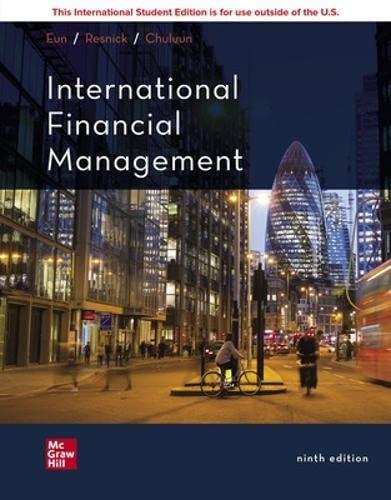Answered step by step
Verified Expert Solution
Question
1 Approved Answer
Adam has just graduated, and has a good job at a decent starting salary. He hopes to purchase his first new car. The car that
Adam has just graduated, and has a good job at a decent starting salary. He hopes to purchase his first new car. The
car that Adam is contidering costs $ The dealer has given him three payment options: Zero percent flnaving. Make a $ down payment fom his savings and finance the femainder with a
APR loan for months. Adam has more than enough cash for the down payment, thanks to generous graduation Rebate with no money down. Receive a $ rebare fom the car dealer and finance the rest with a standard
month loan, with an APR. He likes this option, as he could think of many other uses for the $ of his Pay cash. Get the $ rebate and pay the rest with cash. While Adam doesn't have balance of the car cost
Pay cash. Get the $ rebate and pay the rest with cash. While Adam doesn't have balance of the car cost in hand, he wants to evaluate this option. His parents always paid cash when they bought a fmily car; Adam wonders if this really was a good idea.
considering putting $ of her annual savings in a stock fond. She just tumed and has a long way to go until retiremen
at age and she considers this risk level reasonable. The fund she is looking at has eamed an average of over the past years and could be expected to continue eaming this amount, on awerage. While she has no current retioment savings, five
years ago Jenna's grandparents gave her a new year US Treasury bond with a $ sce valve with semiannual
Jenna wants to know her retirement income if she both sells her Treasury bond at its current market valve and invests the proceeds in the stock
fund and suves an additional $ at the end of each year in the stock: fund fom now vatil the retiret. Once the retires, Jenna wants thone swings to last until the is
savings to last until she is
Case Questions What are the cash flows associated with each of Adam's three car fnancing options?
Suppose that, simitar to his parents, Adam had plenty of cash in the bank so that he could easily afford to pay cauh for the car without
running into debt now or in the foreseable future. If his cash eams interest at a APR based on monthly compounding at the bank, what would be his best purchase option for the car? In fact, Adam doesn't have sufient cash to cover all his debts including his substantial student loans. The loans have a APR.
$ todry saves Adam roughly $ next year because he can pay down the student loans. So is Adam's time value of moncy in this cane. Suppose instead Adam has a lot of credit card debt, with an APR, and he doubts he will pay of this debt completely before he
Suppose instead Adam has a lot of credit card debt, with an
APR pays of the car. What is Adam's best option now? Hint: See Hint on above
Question pts:
MONTHLY CASH FLOWS:
t
tableOption Option
Question pts:
Which option should he select?
Which option should he select?
Which option should he select?

Step by Step Solution
There are 3 Steps involved in it
Step: 1

Get Instant Access to Expert-Tailored Solutions
See step-by-step solutions with expert insights and AI powered tools for academic success
Step: 2

Step: 3

Ace Your Homework with AI
Get the answers you need in no time with our AI-driven, step-by-step assistance
Get Started


